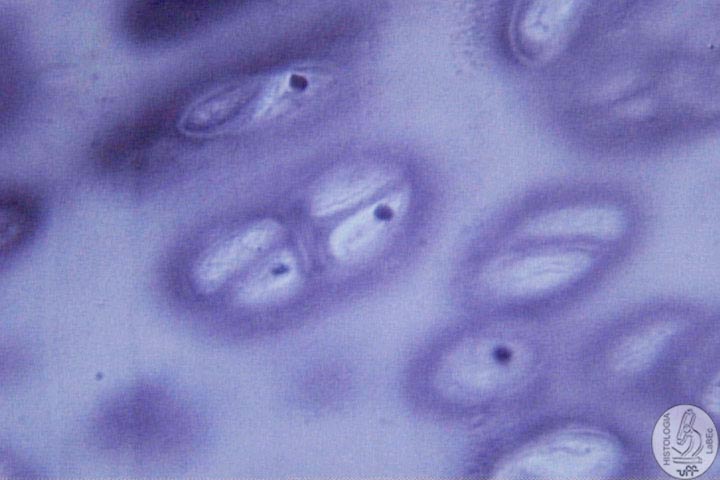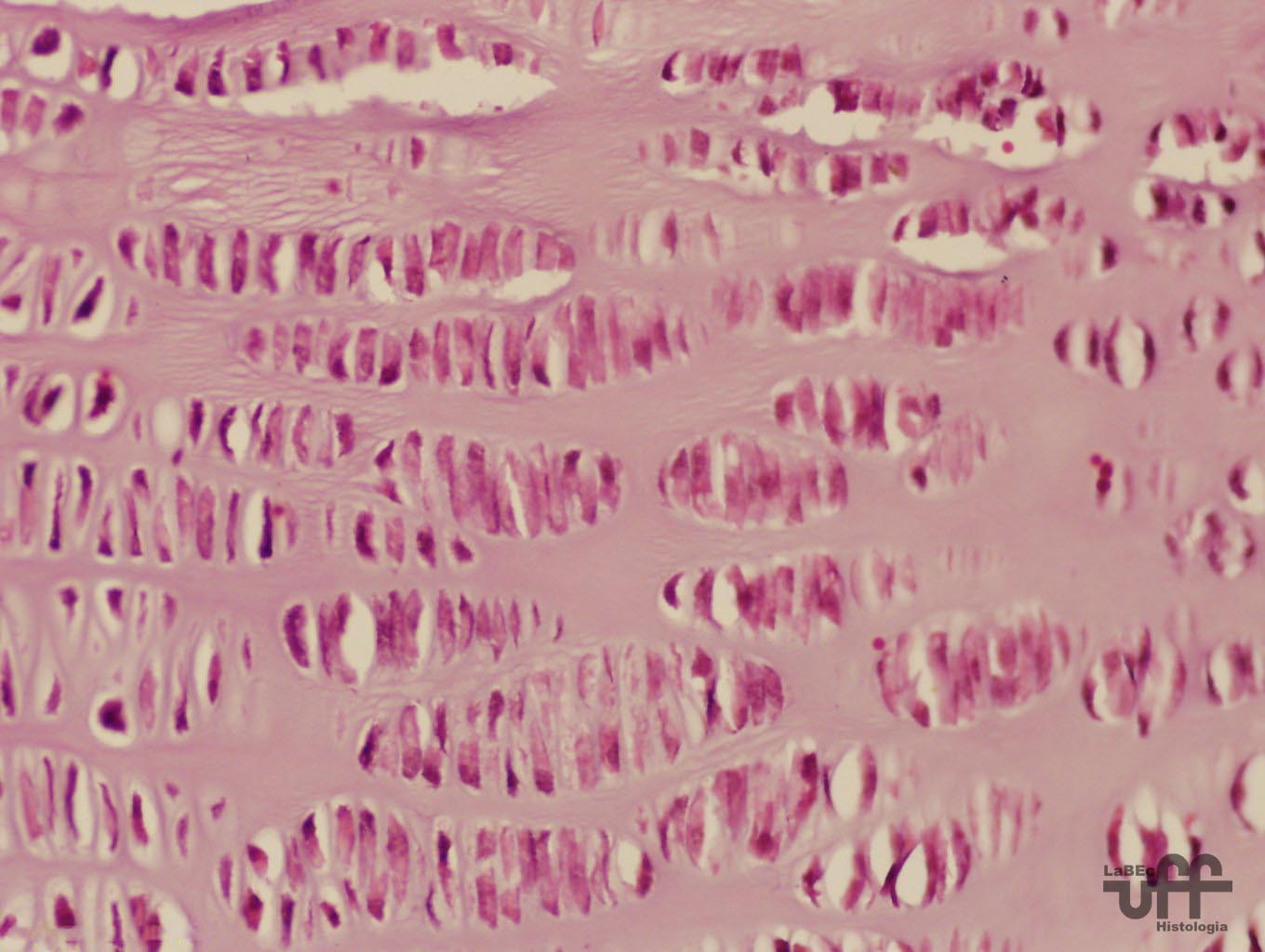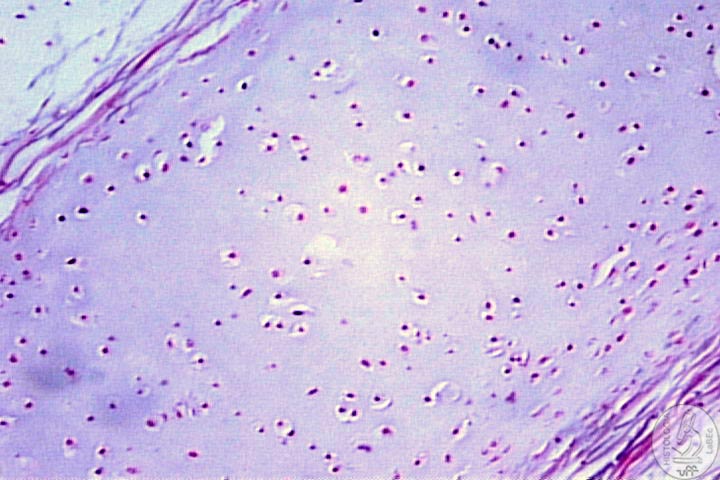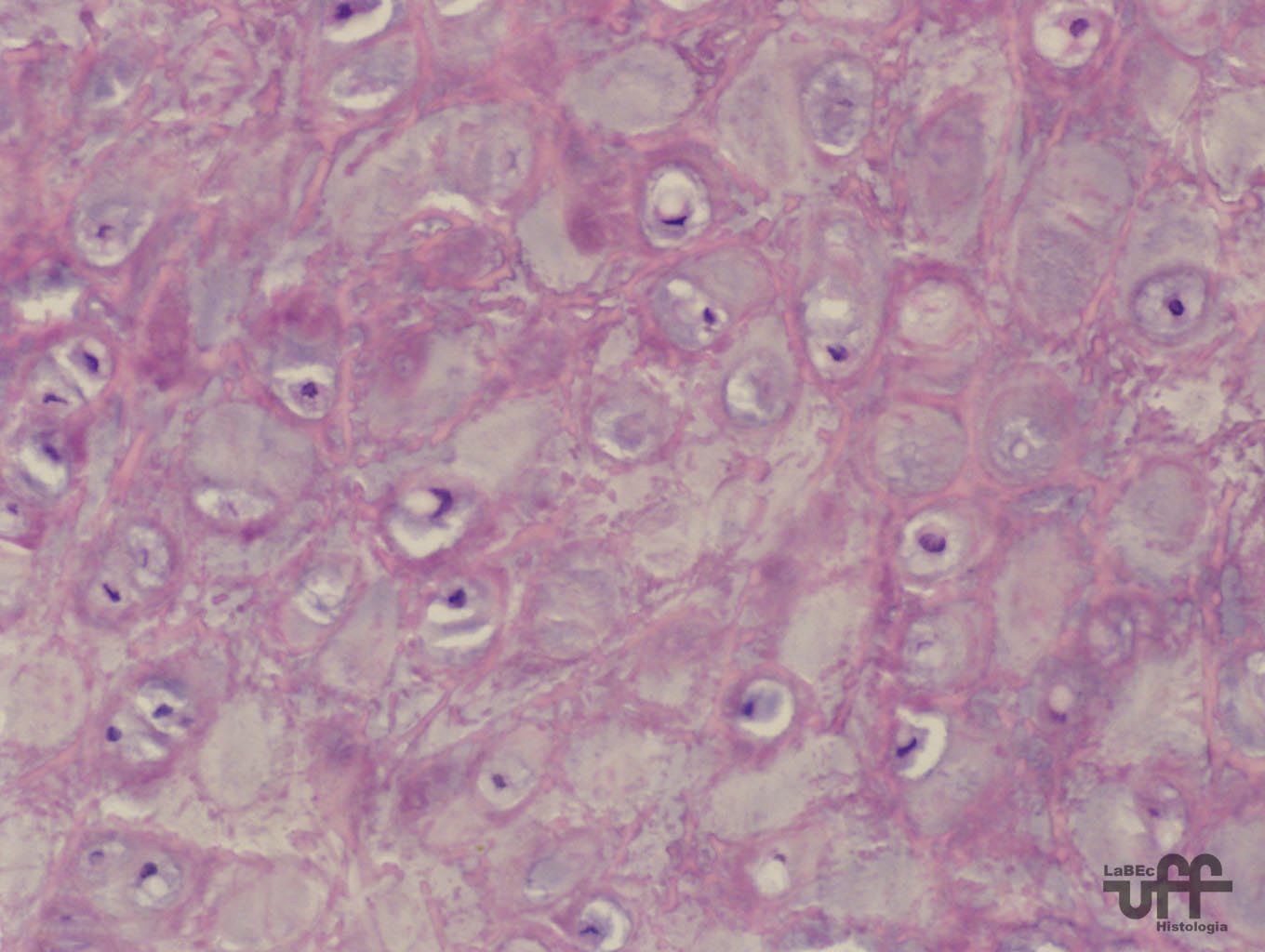| Veterinary
Histology UFF Department of Morphology - Biomedic Institute LaBEc - Laboratory of Cellular and Extracellular Biomorphology |
|||
Veterinary
Histology Atlas |
|||
Cartilaginous
Tissue |
|
General Characteristics •
Firm and flexible matrix, resistant to mechanical tensions(Shock
absorption) |
|
Components Undifferentiated Mesenchymal Cells: Differentiate and form the chondroblasts |
|
Perichondrium |
|
Chondroblasts • Linage of cells that will originate new Chondrocytes • Synthesize the Cartilaginous Matrix • Reproduce through Mitosis |
|
Chondrocytes:
Mature cells responsible for the maintenance of the Cartilaginous
Matrix |
|
Cartilaginous
Matrix • Formed of: Proteoglycans, Glycoproteins, Hyaluronic Acid and Bundle of thin fibres of Collagen Type II • Molecular interaction between glycosaminoglycans and fibrils of Collagen type II grant its toughness |
|
Forms of Growth Appositional: Differentiation of Mesenchymal cells into chondroblasts and then into chondrocytes |
|
Interstitial • Through the mitotic division of existing chondrocytes • Occurs only during the cartilage’s first phases |
|
Isogenous
Groups: Cells with the same origin whose successive mitosis
form a group of cells |
|
Coronary • Compact Formation • Normally 4 cells organized themselves forming a square |
|
Axial:
Cells group themselves forming a line |
|
Types |
|
Hyaline
Cartilage • Composed mainly of Collagen Type II • Offers a relative toughness to the Tissue • Perichondrium is present • Ex: Nose, Larynx, Tracheal Rings, Bronchia, ventral extremities of the ribs, Articulations |
|
Elastic
Cartilage • Besides producing the matrix, it produces elastic fibers • Composed of Elastic Fibers and Collagen Type II • Greater Flexibility • Perichondrium is present • Ex: Ear, Eustachian tube, Epiglote, Larynx |
|
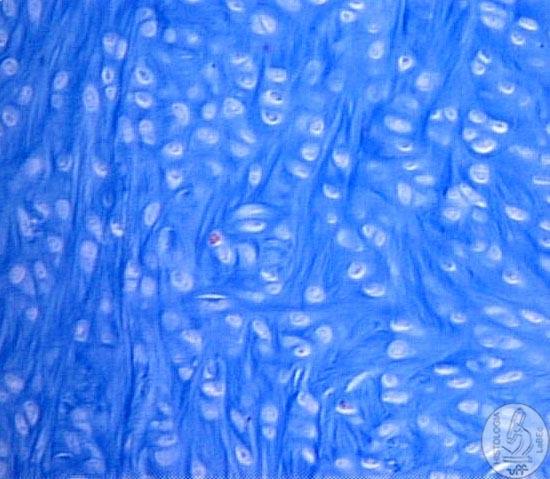
|
Fibrous
Cartilage • Thick Clusters of Collagen Type I are present • Scarce Cartilaginous Matrix • Absence of Perichondrium • Associated to a Dense Connective Tissue • Ex: Intervertebral Discs, Articular Discs and can be adhered to the bone |
